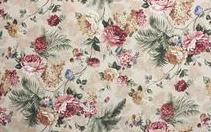 In the "2012 Roundtable Meeting to Explore the Sustainable Development of the Textile Industry", Chen Tongxuan, Vice Chairman of the Guangdong Textile Association, introduced the economy of the textile industry in Guangdong this year. The data shows that the results of the transformation and upgrading of the textile industry in our province have begun to show. Manufacturers are very willing to carry out clean production audits.
In the "2012 Roundtable Meeting to Explore the Sustainable Development of the Textile Industry", Chen Tongxuan, Vice Chairman of the Guangdong Textile Association, introduced the economy of the textile industry in Guangdong this year. The data shows that the results of the transformation and upgrading of the textile industry in our province have begun to show. Manufacturers are very willing to carry out clean production audits. The overall energy consumption has shown a significant decline. According to published research data, driven by the implementation of cleaner production audits, the total energy consumption and water consumption of Guangdong's textile industry showed a significant declining trend in 2011, including electricity consumption. With a 12% drop, the water consumption dropped by 21% year-on-year, the utilization rate of electric heating cycle increased by 25%, and the recycling rate of reclaimed water increased by 32%. It gradually developed to “green GDPâ€.
Participating experts believe that under the global trend of low-carbon consumption, large apparel companies and brands must rely on improving product quality and cost-effectiveness in order to obtain strong competitiveness. In addition, consumers are becoming increasingly sophisticated, and their products are becoming more discerning. Consumers have entered the era of specialization. “As consumers mature, many consumers will pay more attention to the components, standards, and maintenance information on the water bottles. â€
According to reports, under the constraints of environmental protection and other conditions, textile enterprises are becoming more harmless in the selection of chemical materials such as dyes and dyes, and textiles are safer; in terms of fiber selection, renewable resources are basically animal and plant fibers, such as the market in recent years. Common wood dale (wood pulp fiber), bamboo fiber, etc. are all new types of textile fibers, more comfortable than chemical fiber, consumers can enjoy a higher quality consumer experience; and the product's cost-effectiveness will be higher, facing a huge industry Under the competitive environment, the cost performance is the basic condition for the survival of the manufacturers.
However, textile and apparel industry is a large industry with many areas, wide industry chain, long production chain, large scale, and large number of companies. Among them, the number of small and medium-sized micro-enterprises is relatively large, and there is a lack of funds for scientific and technological and ecological environmental protection input. Consciousness and the situation are more common. In addition, market supervision is not in place, and disorderly competition is a serious phenomenon. This poses a huge obstacle to the overall achievement of the sustainable development goals of the industry.
Xu Wenying, vice president of the China Textile Industry Federation, said that after 30 years of rapid development, China should become the world’s largest textile producer, the largest consumer nation, and the largest exporter. Fiber processing accounts for about 56% of the world's total, consumption accounts for 16% of global textiles, and exports account for 36% of global textile trade.
The output value in the first 10 months increased by 11% year-on-year
However, big powers do not equal powers. With the development of China's social economy, the cost of labor costs, land rents and other costs are rising. The cost advantage of low-cost, low-value-added products is gradually disappearing under the impact of textile and apparel competition in Southeast Asia and South America. Relying on scientific and technological progress and original design, branding and other means to enhance the international competitive advantage is imminent. In the face of the limit of environmental capacity and the huge drive for global low-carbon consumption, it is imperative for China's textile industry to build an ecological civilization.
Floor Socks, Cartoon Floor Socks, Fashional Floor Socks, Baby Floor Socks
JNY International Trade Co., Ltd , http://www.jny-socks.com
